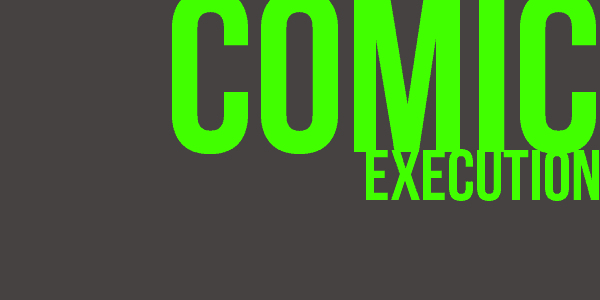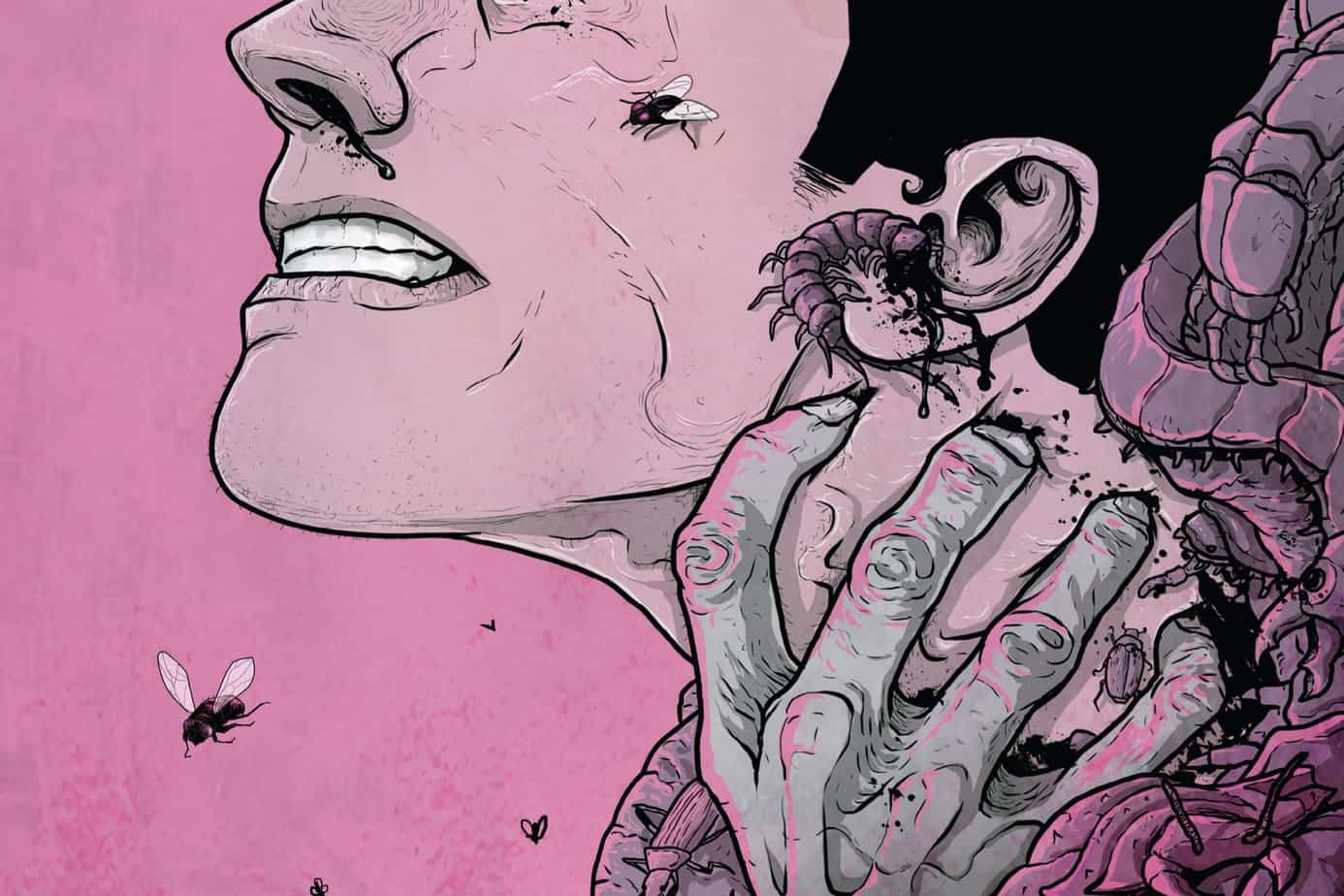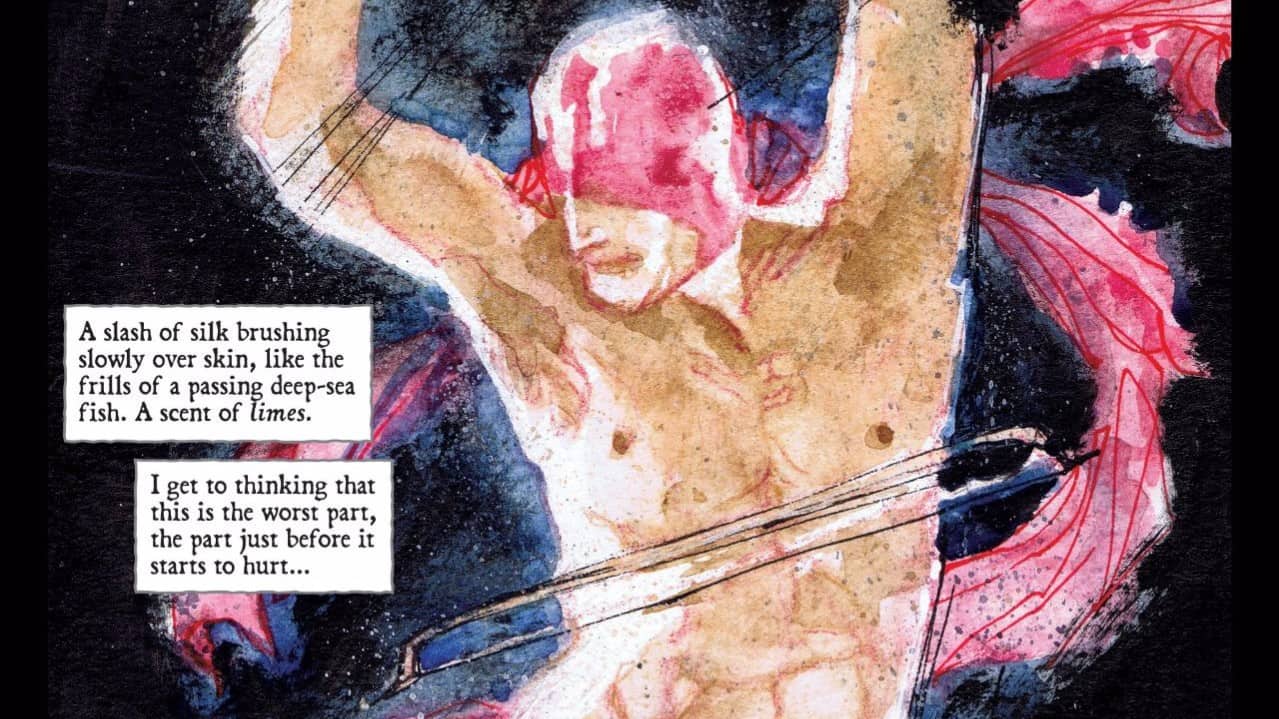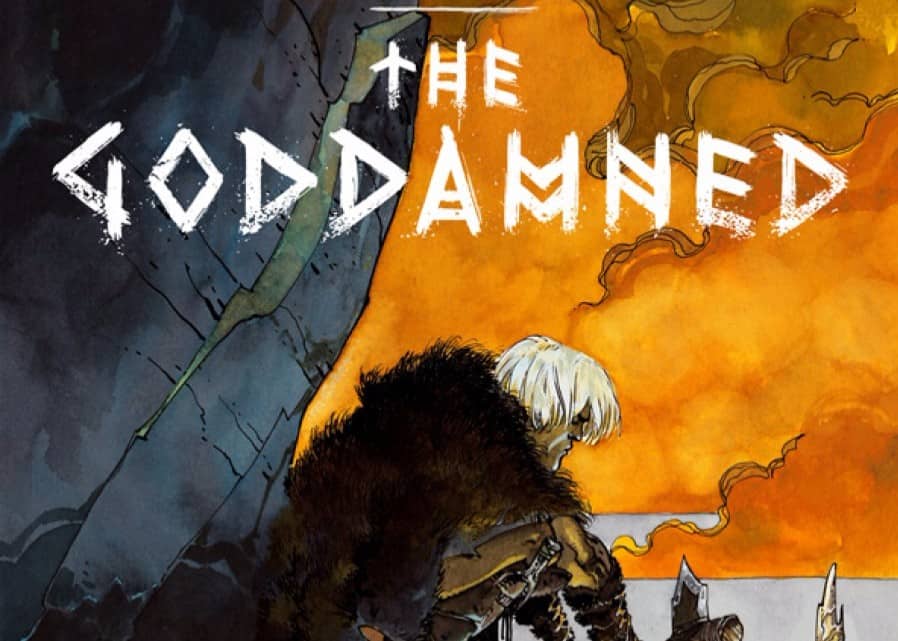
[Comic Execution] 7/4 – BIG TROUBLE IN LITTLE CHINA, NAILBITER, THE SHADOW
Happy Independence Day!
For the rest of the world, Happy USA-Finally-Stopped-Whining Day!
I’m a bit bummed, though, about this week’s comics. You see, besides BIG TROUBLE IN LITTLE CHINA’s Eric Powell and THE SHADOW: MIDNIGHT IN MOSCOW’s Howard Chaykin, none of the other artists or writers I’m reviewing in this week’s column are Americans. “But Chris,” you say, “BIG TROUBLE IN LITTLE CHINA’s artist, Brian Churilla, is from Portland, as is NAILBITER writer Joshua Williamson, and Portland is a city in the United States of America”
To which I say: have you ever actually been to Portland? Like, visited it, set foot inside it, verified with your own senses that it does indeed exist? Because if you ask me, I think Portland is actually a Canadian city PRETENDING to be an American city. Frankly, it’s the only explanation that makes any sense. If you don’t believe me, consider this; cult horror film director David DeCoteau is from Portland… but also is a Canadian! How does THAT work, huh?
NAILBITER #3
Writer: Joshua Williamson
Artist: Mike Henderson
Colorist: Adam Guzowski
Publisher: Image Comics
Price: $3 (Digital)
It’s kind of interesting to see how hot NAILBITER has gotten in the past month. The second issue sold out and I haven’t seen the second printing on shelves so it must’ve been hotly anticipated by those who missed out the first time around. Which is interesting because while I definitely prefer NAILBITER to Joshua Williamson’s previous horror comic ‘Ghosted,’ I don’t feel like there’s such a huge differentiation in the quality of the material. I’m cynical when it comes to comic books in general (thus a column called “Comic Execution”) and while I could certainly declare NAILBITER a blatant grab at the current serial killer vogue, the genuine enthusiasm and inspired authenticity catapults the effort beyond the reach of my jaded attitude. That said, I really hope that the success of NAILBITER drives readers into the open arms of ‘Ghosted’ where they’ll witness the joy that is Miroslav Mrva’s dread-inducing art.
With NAILBITER, Williamson has refined the blend of crime procedural and serial killer horror to a point, one that seems more effective than where he went with the pulp crime/supernatural horror of ‘Ghosted.’ He immediately subverts the expected course of the narrative by putting the infamous, accused murderer called Nailbiter in harm’s way, continuing to make hard for his readers the emotional response he evokes; it’s hard to like him at all, despite his charm, yet the further along his involvement in Agent Finch’s mission, the less likely it seems that he’s worth the hatred directed at him. Williamson never quite lets the audience off the hook on whether Nailbiter really did kill, mainly because he characterizes him accurately enough that it’s possible he’s simply an asshole connived into the unfortunate role of scapegoat for a larger conspiracy that this issue further implies to exist. It’s also a credit to Williamson’s writing that Agent Finch and Sheriff Crane come off as more than two-dimensional, even though there’s barely enough breathing room for them to do little more than throw nasty barbs at the increasingly unhelpful characters around them.
The plot twist at the climax of the tale is pretty predictable, if still a bit more twisted than I expected. No, it’s the way in which Williamson chooses to deliver it, seeming to specifically emulate the iconic morgue scene from the Twin Peaks pilot with a much more frightening riff. The denouement comes off at first as a bit of a letdown until you stop to put the pieces together and realize it’s actually a callback to the murder in the second issue. It’s impressive how Williamson lays down a plot that’s not particularly challenging yet packs a lot of little intricacies, perhaps even calling back to ‘Ghosted’ with one scene in particular. The whole of NAILBITER is appropriately deceptive and rewards close attention, unlike the bolder and more intense ‘Ghosted.’
Mike Henderson’s work on this episode of NAILBITER does feel like he’s taking a bit of a breather, one I think he’s earned with the last two issues. It’s not to say that there isn’t a lot to look at but there’s quite a few shortcuts taken here, visually. Page three has a rather unnecessary flashback panel using art directly from the first issue, while pages 13 through 15 are almost identical from panel to panel and every other panel is blacked out besides. But even when he’s cheating, Henderson can’t resist throwing in flourishes; rather than let the morgue conversation happen between static characters (I’ve seen artists do this), he makes sure to pose each of them differently in each panel, fitting their stances to their dialogue and personality. And, perhaps more importantly, the scary stuff that happens there is just as effective as any of the other scares in the previous issues, if not more so. I don’t know how much of the serial killer costume designs are Henderson’s work but they’re effectively creepy. And, as usual, he handles all the other errata with aplomb, from a truck crashing into a tree to the re-introduction to a certain cemetery, it’s honestly pretty surprising how well Henderson has maintained the quality for three issues of textbook insanity.
This issue has two more pages than the last issue but isn’t nearly as bombastic on the art side of things, so it balances out. Yet again, I can’t recommend this book enough because it’s still a ridiculous $3, as cheap as you’re going to see at this level of quality, especially in print.
BIG TROUBLE IN LITTLE CHINA #2
Writer: Eric Powell
Artist: Brian Churilla
Colorist: Michael Garland
Publisher: BOOM! Studios
Price: $4 (Digital)
Interestingly, John Carpenter’s ‘Big Trouble In Little China’ film might actually represent the false start of that ‘90s pulp comics adaptation spree mentioned in my THE SHADOW review. I say false start in the sense that it was (and probably still is) ahead of its time in that it both lovingly embraced and irreverently riffed on pulp comics, resulting in a confused reception that basically taught Hollywood the unfortunate lesson that letting one person have complete control of their vision results in things that, hey, not everyone will necessarily like! Ironically, it’s a great example of how counter-intuitive this idea is that ‘Big Trouble In Little China’ is a cult classic while the many pulp comics adaptations from the ‘90s have been largely forgotten.
While one could certainly say that ‘Big Trouble In Little China’ has remained relevant largely because it wisely winked at the audience as it gleefully played out its pulp goodness, that’s ignoring the fact that it still was a pulp story with pulp action, and the comic isn’t afraid to confront this head on. The newest issue opens with a tense confrontation frequently interrupted by hapless protagonist Jack Burton’s inane interludes, playing a perfect foil to the villain’s operatic spiel. The comedy works well then gets out of the way so the adventure can begin, kicking off with a subtle wink from Powell acknowledging how fantastic the tale is going to be.
When Jack and “sidekick” Egg enter the supernatural dimension of the Midnight Road, they’re almost immediately greeted by what horror aficionados would call the Harbinger whose warning is issued in a tongue that more than a little resembles Lovecraft’s eldritch languages. Another character they meet is an interesting riff on Asian mythology involving turtles but Powell has him behave against type at first but inevitably uses him to add more mysticism to the setting, at least until Jack once again ruins it with a story of his own. Jack’s story is kind of funny but also kind of irritating in the sense that it continues to marginalize female characters for the sake of humor. Sure, it also pokes fun at the romantic incompetence of Jack but this gets repeated a little later down the road and stops being funny at that point. However, the final page does set up the next issue for an introduction to a female character who might serve as more than the butt of a joke.
Brian Churilla’s art is pretty spectacular in this issue, as it leaves normal reality behind for the mystical netherworld of the Midnight Road, giving him an opportunity to stretch his muscles. The surreal landscapes are delightfully weird and it really feels like Churilla is having fun with the characters as well as the buildings, putting a lot of detail into their wild, Eastern-styled appearances. It’s actually a bit of a bummer when the flashback takes place in the real world because I really just wanted to see Churilla flesh out more of this awesome place. Colorist Michael Garland actually does a lot of heavy lifting here, matching Churilla’s enthusiastic lines with solid tones enhanced by subtle hints of lurid purple and heavy blues. I particularly love the job he did on the massive, red palace, giving it a lacquered blood texture. And he elevates the slightly tedious flashback to something more exciting than it has the right to be.
Eric Powell knows how to write really funny dialogue and has an exciting story to present but it’s really frustrating that there’s a weird dismissal of female characters in this issue. It’s not outright sexist but it narrowly treads that line and female readers will probably be outright turned off by the roles their gender is assigned to play here. Churilla and Garland’s art almost makes up for it, except this is a $4 comic and it’s hard to recommend it for catering entirely to men so far. If the next issue does so again, I’ll definitely be executing the series.
 THE SHADOW: MIDNIGHT IN MOSCOW #2
THE SHADOW: MIDNIGHT IN MOSCOW #2
Writer: Howard Chaykin
Artist: Howard Chaykin
Colorist: Jesus Aburto
Publisher: Dynamite Entertainment
Price: $4 (Digital)
You know what’s weird to think about? There was a period of time where Hollywood produced movies based on Dick Tracy, The Shadow and The Phantom. THE PHANTOM!! And heck, two out of three of those weren’t actually too bad! (Hint: Billy Zane was the lead in one of them) There’s literally no love in the movie industry now for classic pulp. Oh, sure, there’s another ‘Sin City’ movie coming but that thing was due quite some time back. It’s quite possible that the delay has something to do with the bomb that was ‘The Spirit’ but more than anything I think they just realized most people only care about superhero comics so pulp got left behind. Which is a shame, really, because there’s a lot of properties that haven’t been mined from that era: take the Golden Age DC vigilante The Sandman, who wears a gasmask and puts crime to sleep. Or try taking on Matt Wagner’s classic Grendel character, a deft mix of pulp noir and violent vigilante action. ARE YOU LISTENING HOLLYWOOD?
I’d even say that writer/artist extraordinaire Howard Chaykin has written a new The Shadow story worthy of a reboot. The Shadow is retiring! But not before he pulls off one last job; wiping New York City clean of organized crime! The issue barely gets off the ground before it explodes into carnage, triggering a citywide gang war, fueled by mysterious, seemingly random attacks perpetrated by rival mobsters with no warning or motive. The narrative bounces gleefully from one delirious setpiece to another; scandalous blackmail, yacht-borne murder, street-corner brain-blasting, etc, with seemingly no obvious correlation between the events, besides wealthy crooks in the crosshairs. Between these is a creeping side-story kicked off last issue involving a British scientist being “persuaded” to construct a mysterious machine for an equally mysterious man. Eventually, the story addresses The Shadow’s retirement and ends with him setting off from New York City to… Britain, of course! The game is afoot. Chaykin knows how to reel in the reader with questions then bombard them with action at the right moments, keeping a fairly steady pace that calms a bit near the end but is rife with fun dialogue and elegant narration.
Chaykin’s art is as widescreen as he can manage, in this issue. There’s also an abundance of his signature bloody violence, compete with wall-painting shootouts and messy street executions. There are touches of surrealism here and there as well, like the disembodied faces and the distant explosion at night, not to mention the wetsuit assassins. It’s all illustrated with both energy and control, though it must also be added that many of the backgrounds look too clean and detailed to have been drawn by hand, so I’m curious as to just how much of the line art was done by Chaykin himself. But unless you’re looking for it, you actually won’t notice and, if you don’t, it’s hard not to be immersed in the setting, which is saturated with vivid details from the era.
There’s 20 pages of comic here and it’s all high quality art, fun storytelling and proper homage to colorful, wild pulp crime. It is expensive though, at $4 for only 20 pages, so I’m starting to wonder if this series wouldn’t be enjoyed better collected as a trade. We’ll look at the next issue and hope it bumps up the page count. Otherwise, I can’t honestly recommend anyone other than pulp comic fans picking this up as a monthly title.



